132 Blu-ray / Pictures & Reflections
Description
A small boat rocks helplessly on the waves, delivered up by the ocean; the listener holds tight onto the edge so they don't fall out. Unhatched chicks dancing in their shells; the listener experiences their confinement. It's an almost perfect illusion, whether it's the bells down below in the valley or the catacombs where the dead lie sleeping. And the "Dance of the Hut on Fowl's Legs" gives free rein to fantasy, even in the title! Anything is possible - inside your head! This is by no means just because of TACET Real Surround Sound. It comes from the 3 Ms, Modest Mussorgsky, Maurice Ravel, and Markus Schirmer. Old works in a new guise. The recording has already been released on DVD-Audio. As it is out of stock, it will now be reissued on Blu-ray disc.
5 reviews for 132 Blu-ray / Pictures & Reflections
You must be logged in to post a review.

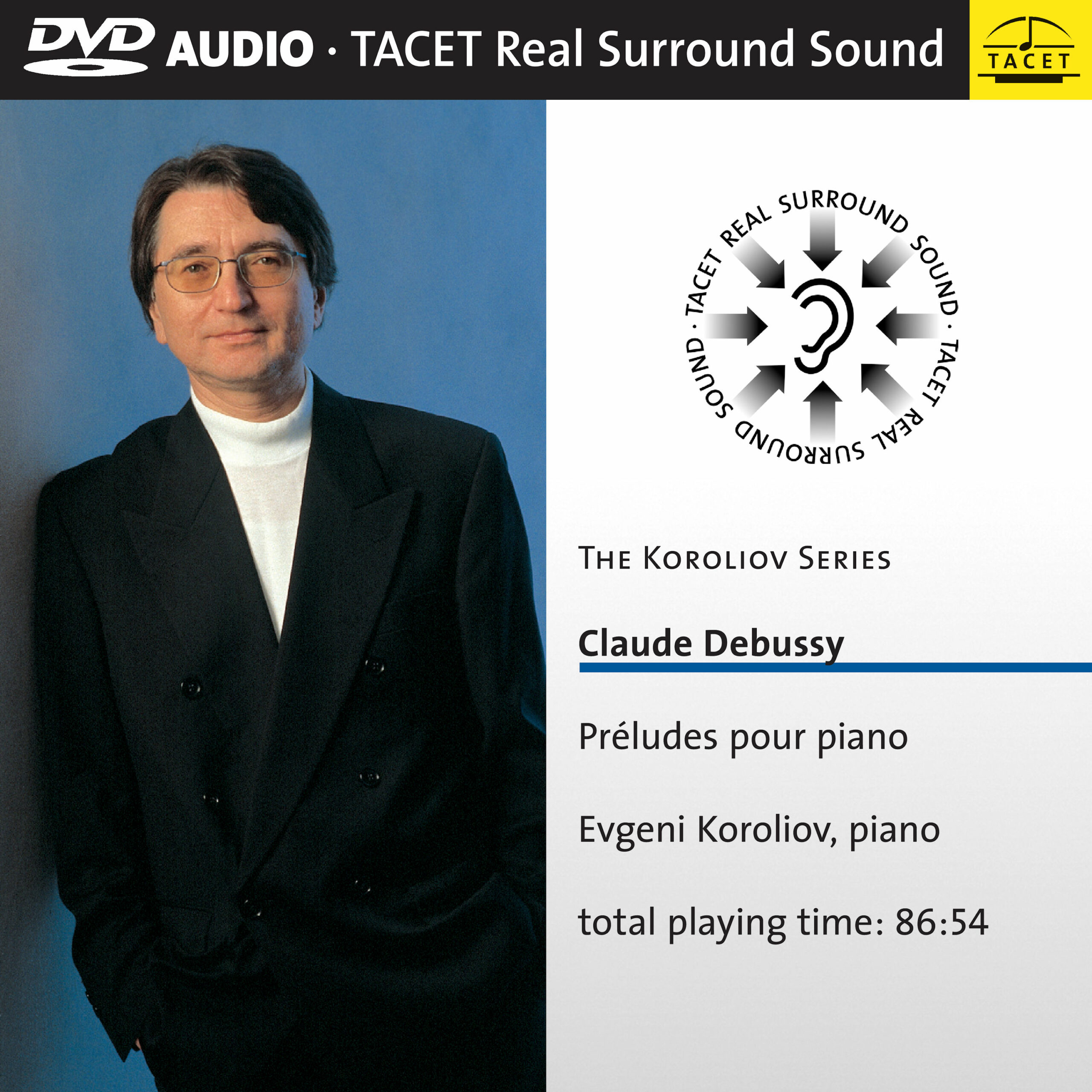
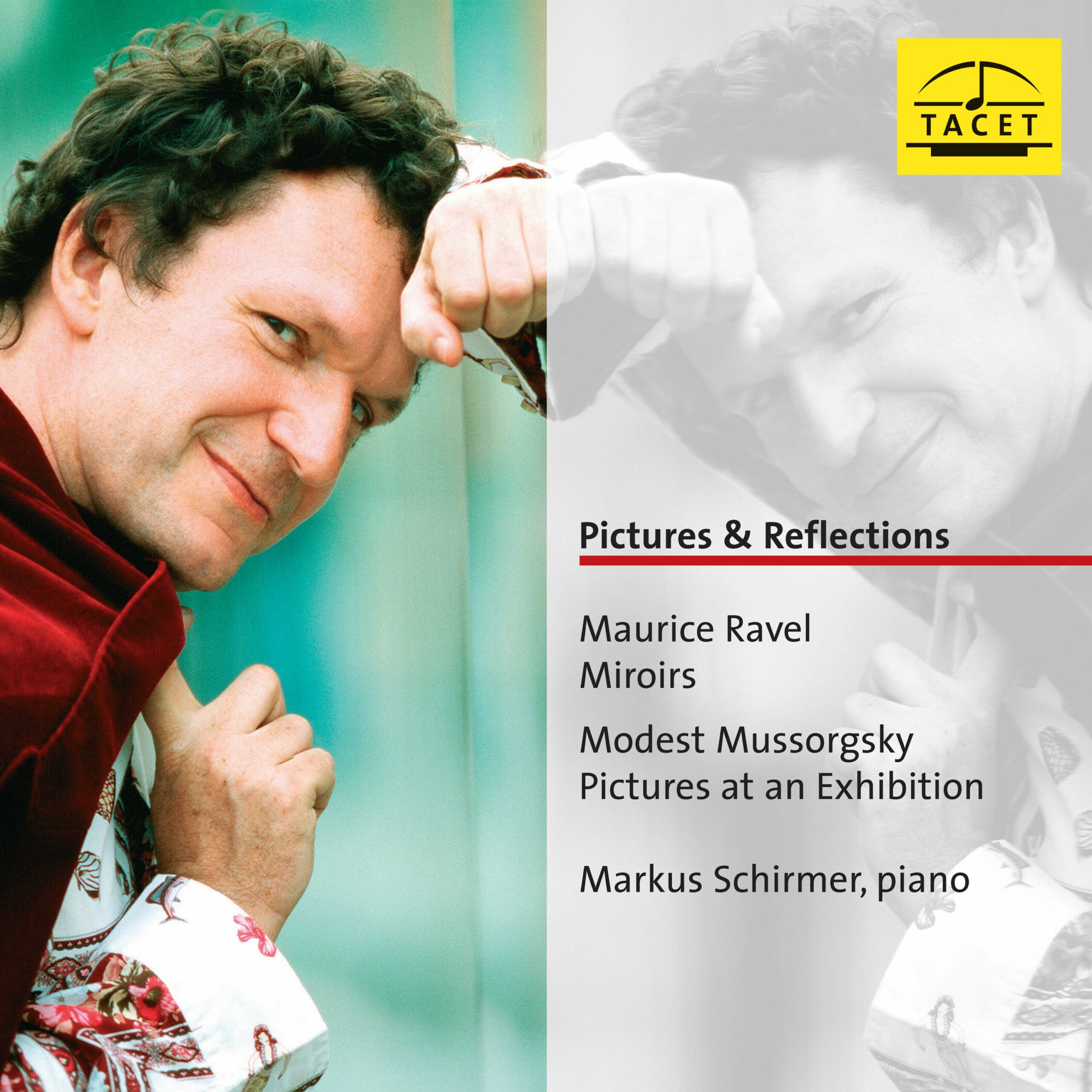
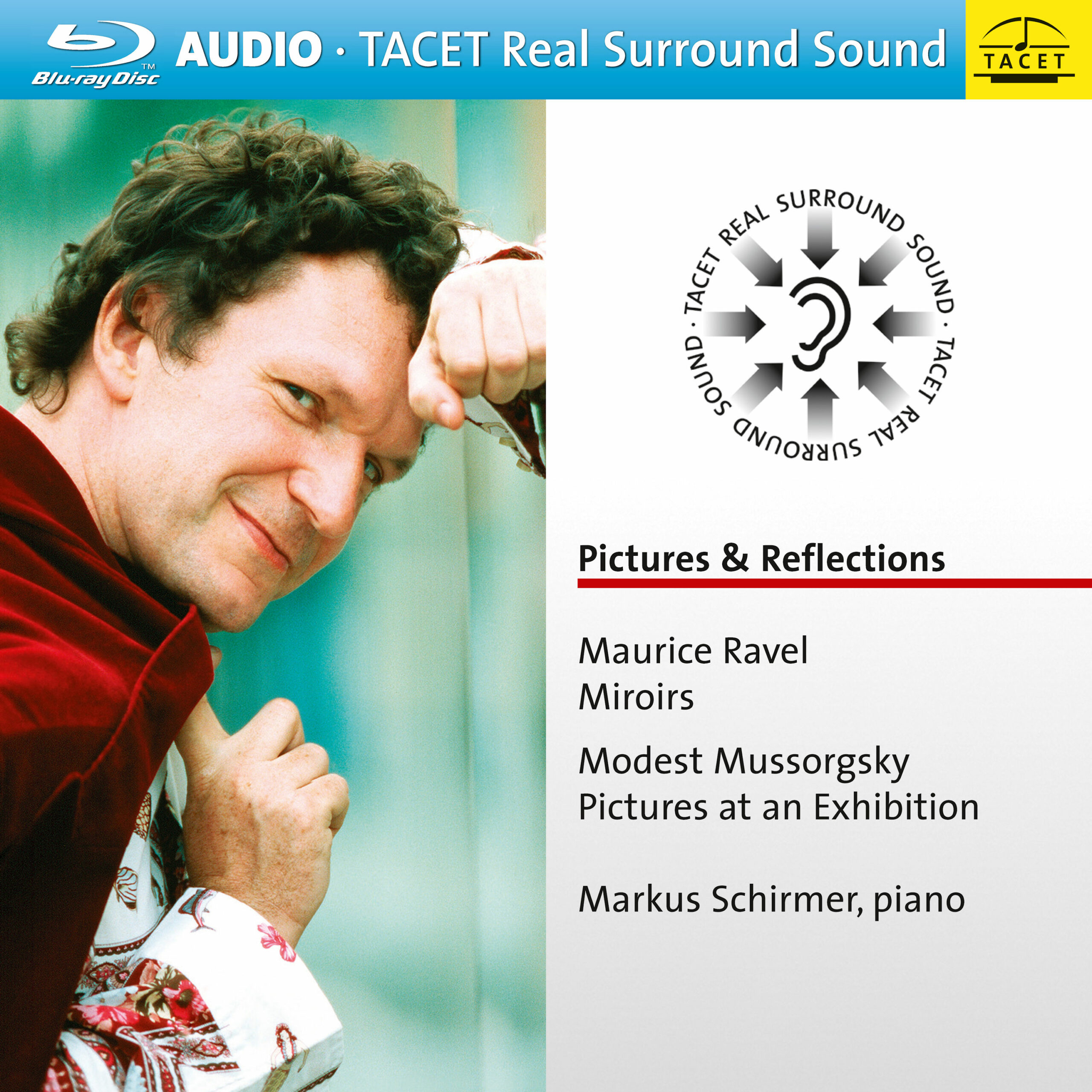
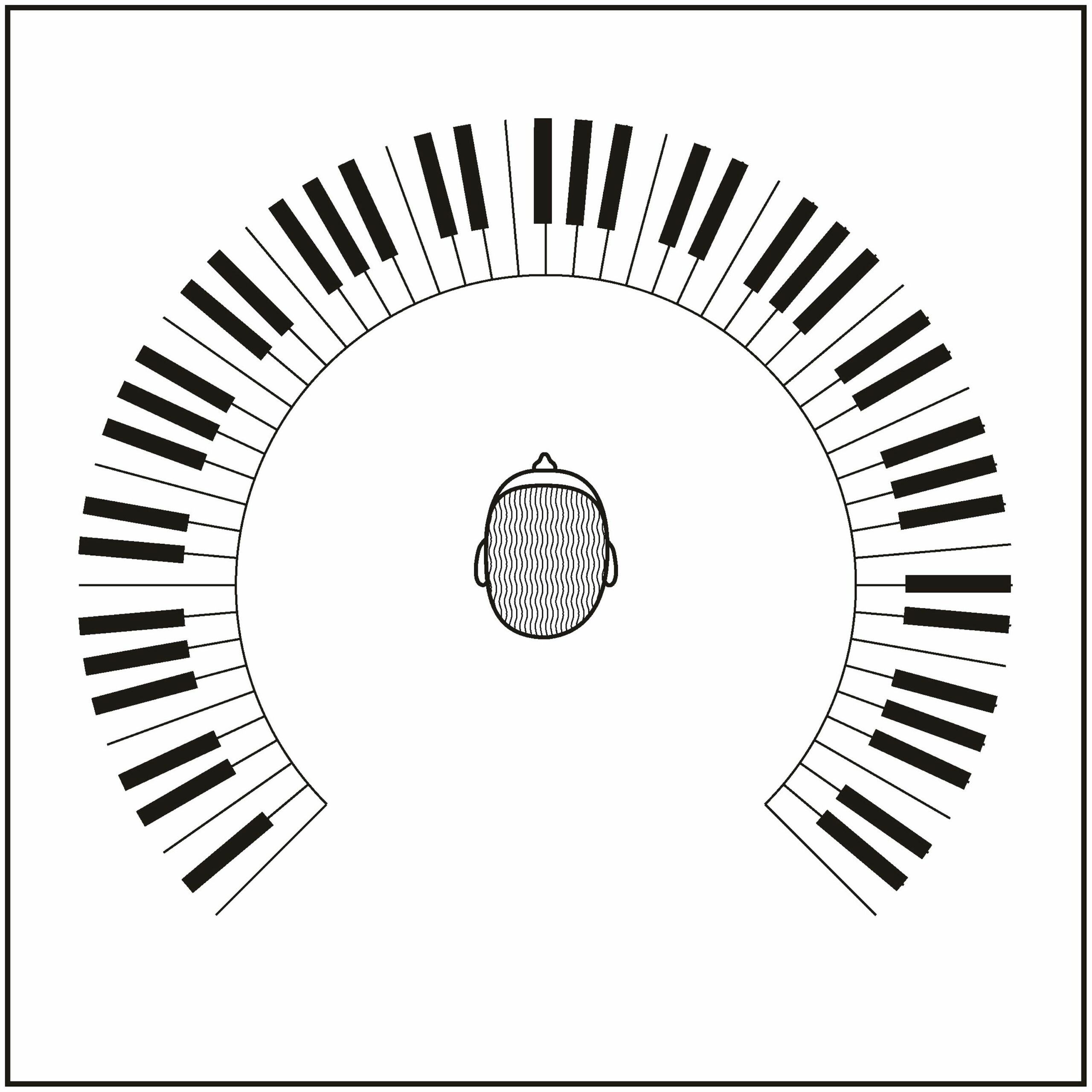
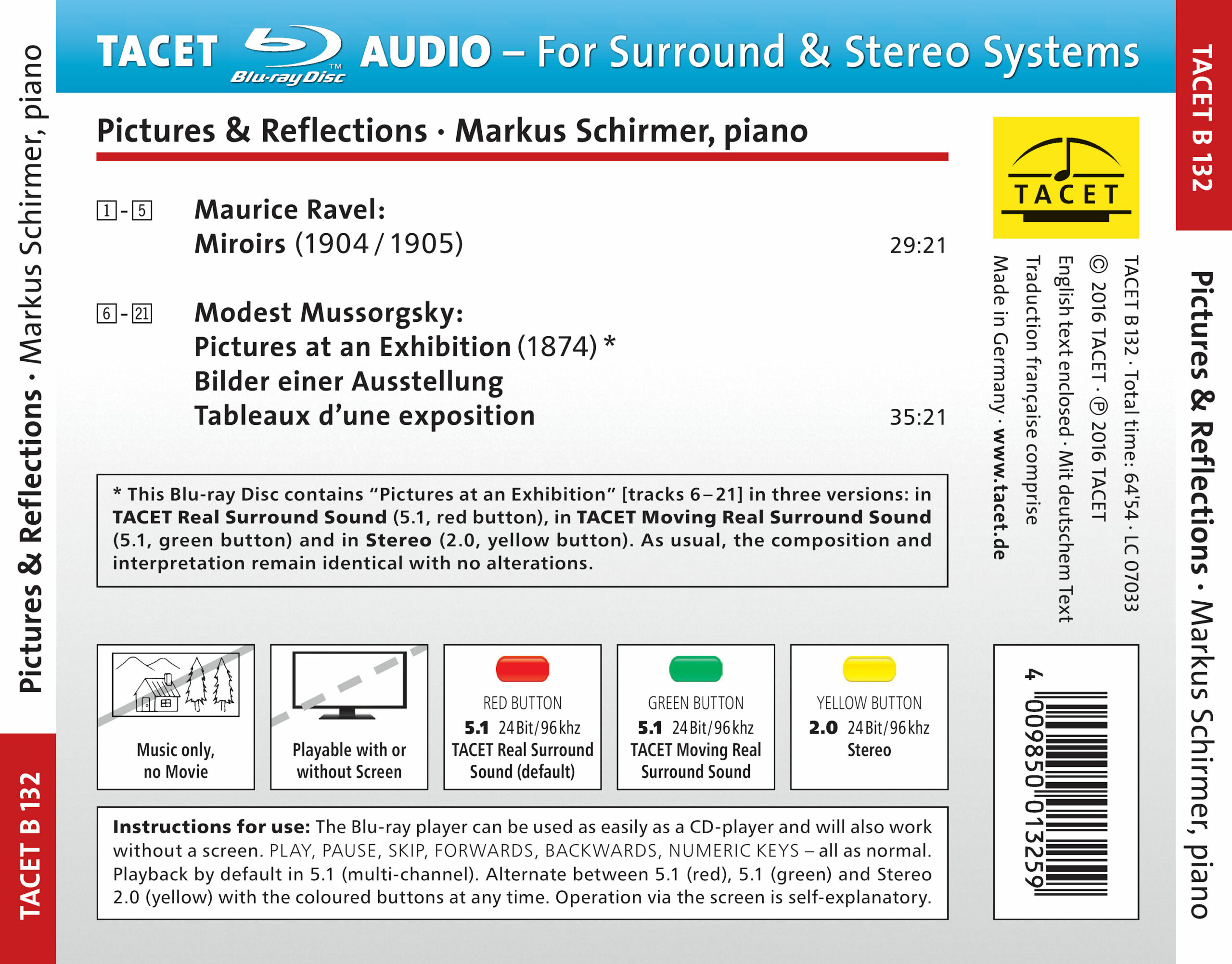
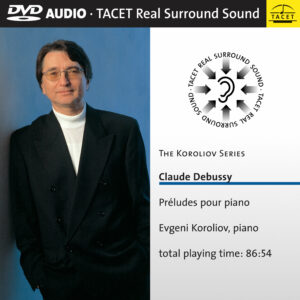
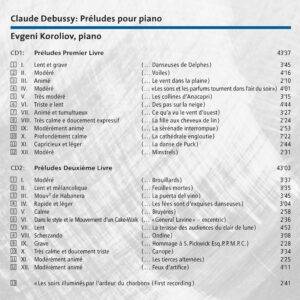


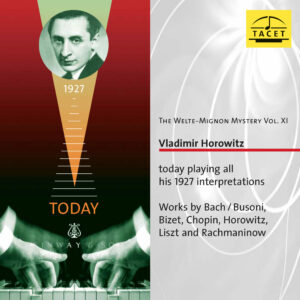
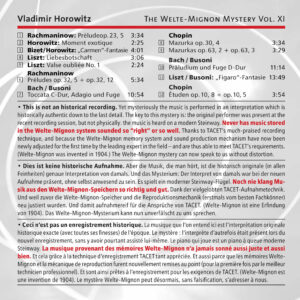
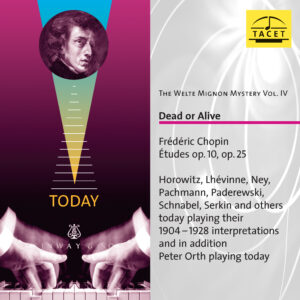
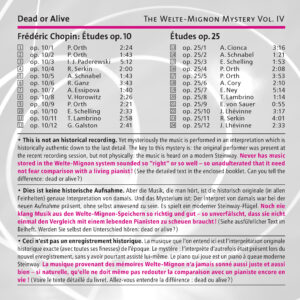
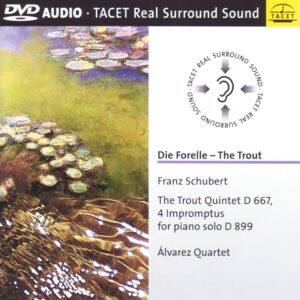
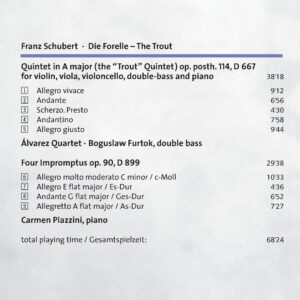
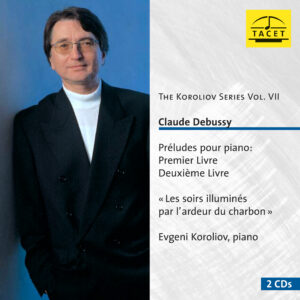
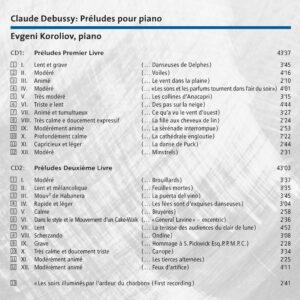
Classical CD Review –
--> original review
(…) This fine recording of Ravel/Mussorgsky featuring pianist Markus Schemer was initially released on Tacet more than a decade ago. Here they are again, but now in deluxe digital technology. This Blu Ray disk contains three audio versions of Pictures and you can select the one you wish to experience: Tacet Real Surround Sound (5.1), Tacet Moving Real Surround Sound (5.1), and in stereo (2.0). Impressive sound experience throughout, and I imagine most listeners will prefer the first choice. The Ravel work is in only one audio format,5.1. An intriguing issue, indeed. (…)
Robert Benson
Klassik heute –
--> original review
The Pictures & Reflections compilation by Austrian pianist Markus Schirmer, featuring two works matching the CD’s motto – by Ravel and Mussorgsky – has already spent a good decade in the discographic catalogue. It was back in 2004 that Schirmer, in the “studio” of the then brand-new Helmut List Hall in Graz, examined Mussorgsky’s Russian Pictures at an Exhibition and Ravel’s French Miroirs with skill and a decidedly individual approach, without ever losing sight of the larger structural and thematic overview. His interpretations of the Pictures, handled in a manner that was rather un-Russian, perhaps even “Frenchified” under the impression of Miroirs – with a touch of elegance – were at that time released on a standard compact disc. A DVD Audio edition followed somewhat later, produced with the tried-and-true “Tacet Real Surround Sound” method (D 132). Most recently, Schirmer’s interpretations have also been made available in Blu-ray Disc quality. With a playing time of 65 minutes, the program was already a little on the meager side for the DVD format, but Schirmer and his producers had at that time decided not to make use of the literary resources of the Graz concert performance. For on that occasion – the Austrian Broadcasting Corporation (ORF) broadcast the complete program – actor Wolfram Berger contributed decisively to the impact, indeed to the very understanding of Mussorgsky’s cycle, with carefully chosen Russian texts.
Musically, Schirmer – I may refer back to my review of May 24, 2005 – offers a tour of the “Exhibition” that is firmly grounded in the essential character-definitions and thereby provides clear orientation for the listener. With ample force when the ox-cart rumbles, with concentrated weight in the finale – but not with those chordal karate chops that have become fashionable in today’s youthful, competitive, and rivalrous pianism. Schirmer’s interpretation and illumination of the Miroirs, in my view, lean rather toward the gentle, the contemplative, corresponding in fact to the disc’s title: Reflections.
Peter Cossé
Pizzicato –
--> original review
Very studied and constructed, at times strongly drawn out – this is how Markus Schirmer presents the program of this Blu-ray in Tacet Real Surround. Back in 2004, when the CD was released in stereo sound, I wrote: “This eccentric approach could still be comprehensible, were it not for the fact that the melodic flow of the music is broken!” I still have this impression when I choose the stereo version on this disc with its multiple sound formats. Yet in “Real Surround” it is clearly diminished, since the sound alone contributes so much atmosphere that, sitting inside the sound, one hears in a completely different way than when sitting in front of the sound. An interesting experience!
Pictures at an Exhibition is also available here in “Moving Surround,” in which the sound engineer, with his controls, lets the piano swirl around the listener’s head. Admittedly, it is something of a gimmick, but the fact that Gnomus thus becomes a demon, that Baba Yaga really flies around you, that the Old Castle appears even more ghostly, that the children in the Tuileries and the chicks dance in a circle around you – that is indeed a wonderful sonic experience. Equally playful is the scene on the marketplace at Limoges, while the Catacombs send a shiver down one’s spine.
Back to the purely musical: these very thoughtful and impressionistic Miroirs remain quite unusual within the interpretive spectrum of Ravel’s work, and Mussorgsky’s Pictures at an Exhibition, in my opinion, could bear more spontaneity and more drama than can be heard here.
Remy Franck
theaterbyte.com –
--> original review
TACET is an eclectic German recording company that features high-resolution surround sound recordings of both familiar and not so familiar classical music. In the case of the present release, Pictures & Reflections, internationally renowned Austrian pianist Markus Schirmer provides a program of two keyboard warhorses, Maurice Ravel’s Miroirs (Mirrors) and Modest Mussorgsky’s Pictures at an Exhibition. Schirmer’s rationale for this pairing is explained in the liner notes: “The idea of putting Ravel’s brilliant cycle side by side with Mussorgsky’s “Pictures” is one which I have felt for a long time would be a thrilling confrontation.”
Ravel’s Miroirs has five moments as listed below:
Noctuelles (Night moths)
Oiseaux tristes (Sad birds)
Une Barque sur l’Ocean (A boat on the ocean)
Alborada del grazioso (Morning song of the jester)
La Vallee des cloches (The valley of bells)
Mussorgsky was inspired by a painting exhibition by his friend Victor Hartmann and Pictures at an Exhibition has ten movements, each a different picture, that are introduced and then separated by promenades.
Gnomus (The Gnome)
The Old Castle
Tuileries (the famous French garden)
Tuileries (the famous French garden)
Ballet of the Chickens in their Shells
Samuel Goldberg and Shmuyle
The Marketplace at Limoges
Catacombs/Cum mortuis in lingua morta (with the dead in a dead language)
Baba Yaga-the hut on fowl’s legs
The Great Gate at Kiev
These piano pieces were separated by 30 years but there are more similarities than differences when heard on the same program. Both are impressionistic tone poems that evoke palpable images as a painter would place on a canvas and pianist Schirmer gets into the skin of each work, extracting details that lie below the surface and that are often skirted by lesser artists.
The Audio
Miroirs has two audio options (LPCM 2.0 and LPCM 5.1 Surround) while Pictures adds a third, the so-called “moving surround.” In this latter case, the piano moves around the listener through each piece. I found the “standard” surround mode for each work to give me the best keyboard experience, literally placing my ears within the instrument. It does not hurt Schirmer’s cause that his piano was recorded in Graz’s spacious Helmut List Hall. Listeners preferring a more standard piano presentation will enjoy the two-channel version with impeccable reproduction of this instrument’s sonorities.
The Supplements
A tri-language booklet provides production credits, track listings, and essays on the program, the performer, and the TACET recording process.
The Final Assessment
By way of full disclosure, I have standard go-to performances for each work albeit in much lower resolution, Sviatoslav Richter for Pictures and Pascal Roge for Miroirs. Yet, in many ways, this new release with far better piano sound and, dare I say, better controlled performances of these two blockbusters is immensely satisfying.
© 2016 Blu-rayDefinition.com
Lawrence D. Devoe, MD
Audiophile Impression –
Pictures at an Exhibition by Modest Mussorgsky is one of the beacons of classical music, and is a work originally written for piano in 1874. The background for this composition was an exhibition to commemorate his friend, artist Viktor Hartmann, who died last year.
Perhaps even more played than Mussorgsky's original composition is Ravel's orchestration from 1922. But it was certainly not the first orchestration of this composition - both Mikhail Tushmalov and Henry Wood has orchestrated parts of this work before Maurice Ravel, but it is Ravel's orchestration that has remained as a landmark.
Reinterpretings and recompositions
But even we have not mentioned the most exciting releases of Pictures at an Exhibition. We start with the prog-rock band Emerson Lake and Palmer, who made a very different - and in many`s ears also successful edition. This was my own first encounter with this work in the early 70`s. Another version that I also became acquainted with in mid 70`s is the synthesizer version from the Japanese musician Isao Tomita. This is a reinterpreting that may be located more towards contemporary, or at the intersection of contemporary and pop/rock.
Back to this recording on TACET, with the Austrian pianist Markus Schirmer. Here we find ourselves of course safely within the classical the performance based on the original scores for Modest Mussorgsky. Or is it now really? Basically, this release is based on a concert in List Halle in the Austrian city of Graz. It is a very lively interpretation, which lies on the border to be characterized as flamboyant! But despite all within a classical interpretation.
Extreme surround.
But that's before Andreas Spreer introduce his quite unique surround mixes. On the "ordinary" 5.1 mix, we are already far off the track, even for us who are accustomed to quite radical multichannel mixes. Andreas Spreer have chosen to spread the piano from the left surround channel for the deepest bass tones to right surround channel for the brightest highs. And everything between is successively divided into the three front channels.
An equally radical mix is in itself far from uncommon, and we experience it often from both TACET, and other labels such as our domestic 2L. But then it concerns several instruments and often an entire orchestra. Here it is after all a solitary piano, and then such an approach is rather unique. The result is that you during the listening experience find yourself in the middle of the piano. My mind goes to one of Frank Zappa`s latest releases Yellow Shark, where we find ourselves inside a piano both verbally and musically. For the works Miroirs and Pictures at an Exhibition, this provides a unique experience, that many of course will dismiss as unnatural. But undeniably provides a unique experience of the compositions.
But we have even a second surround mix on this Blu-ray Audio release. "Moving Surround" is a specialty of TACET and Andreas Spreer, and as the name suggests, it relates to a dynamic mix, where the listener is in motion relative to the instruments. Or vice versa …
In this case, it is extreme effects that have been applied, but it is important to add that it is very proficiently and accurately. And it is used to provide a kind of geometric support for some of the themes in this piano work. And when the well is supplemented with an occasional use of sound effects, move the entire artistic experience away from the traditional classical interpretation.
Pictures & Reflections
And then we are back to the question mark I sat at whether this interpretation is contained within a traditional, classic tradition. And of course it is. Yet it is tempting to define the tracks with Moving Surround in the same category as Emerson Lake and Palmer and Tomita. These tracks give a very different experience than conventional piano recordings with this work.
I regret having put Ravel's suite Miroirs entirely in the shadow of Pictures at an Exhibition, despite Ravel fills nearly half the time on the disc. But I'm not going away emphasizing Mussorgsky, this release is a must for those who appreciate this work. Here we get quite diferent pictures at an exhibition!
Karl Erik Sylthe